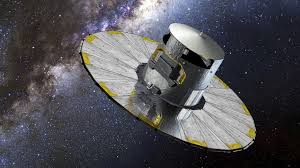Gaia Spacecraft:

Gaia spacecraft has faced and overcome significant challenges in its mission to map over a billion stars in the Milky Way.
- Gaia Spacecraft was launched by the European Space Agency (ESA) in December 2013.
- It is located 1.5 million kilometres from Earth at the second Sun-Earth Lagrange point (L2).
- It monitors each of its target stars about 14 times per year. It is precisely charting their positions, distances, movements, and changes in brightness.
- It is expected to discover hundreds of thousands of new celestial objects, such as extra-solar planets and brown dwarfs, and observe hundreds of thousands of asteroids within our own Solar System
- The mission is also studying more than 1 million distant quasars and providing stringent new tests of Albert Einstein’s General Theory of Relativity.
- It contains two optical telescopes that work with three science instruments to precisely determine the location of stars and their velocities, and to split their light into a spectrum for analysis.
- It is creating an extraordinarily precise three-dimensional map of nearly two billion objects throughout our Galaxy and beyond, mapping their motions, luminosity, temperature and composition.
- This huge stellar census is providing the data needed to tackle an enormous range of important open questions relating to the origin, structure and evolutionary history of our Galaxy.




